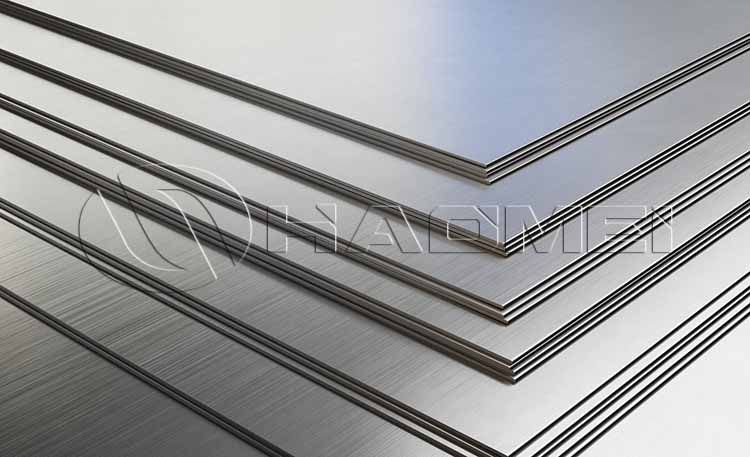Get in touch
-
Email:
sale@alumhm.com -
Tel/whatsapp:
+86-15978414719 -
Fax:
+86-0371-65621393 -
Address:
No.14 Waihuan Road, CBD, Zhengzhou, China -
Website:
https://www.aluminium-tanker-plate.com
Alloy Preferences for Aluminum Tank Trucks in Different Countries
Alloy preferences for aluminum tank trucks consistently revolve around three core requirements: lightweight to reduce weight and increase efficiency, corrosion resistance to extend life, and safety to mitigate risks.
Currently, the mainstream choices globally are 5 Series (aluminum-magnesium alloy) and 6 Series (aluminum-magnesium-silicon alloy). The former, with its excellent corrosion resistance and weldability, has become the preferred choice for hazardous materials transportation, while the latter, with its heat-treatment strengthening advantages, has made a name for itself in the structural component sector.

Europe&United States
Europe and the United States, the birthplace of aluminum tank trucks, commercialized them as early as the 1920s, and currently boast over 45,000 new vehicles added annually. Their alloy selection is clearly safety-oriented:
The core grade focuses on the 5 Series family: 5083 alloy is commonly used for the tank body. Its 4.0%-4.9% magnesium content achieves an ideal balance of medium strength and resistance to seawater and chemical corrosion. Welded tanks can reduce weight by 1-2 tons, significantly improving fuel economy. Alloy 5182 is the preferred material for the head, as its high tensile strength and elongation are well-suited to complex stretching processes and meet European impact resistance standards for hazardous goods transportation.
Material innovation for special scenarios: In high-temperature or highly corrosive environments, alloy 5454 is the preferred material for wave-breaking plates. Its strength is 20% higher than the standard 5052 alloy, and special impurity control processes ensure long-term stability. Some Nordic companies are experimenting with alloy 5754 for food-grade tank trucks, where its excellent weldability meets EU food contact material certification requirements.
Policy initiatives are playing a significant role: The EU's carbon tax is forcing companies to phase out steel tank trucks. Stringent ISO and ECE regulations on tank wall thickness and welding processes have further solidified the dominance of 5-series alloys.
China
Since the first all-aluminum tank truck rolled off the production line in China in 2001, the market has reached 8.5 billion yuan, with hazardous chemicals transportation accounting for over 60% of the market. Alloy selection reflects both policy-driven and cost-optimized factors:
Scaled application of 5-series alloys: 5083 alloy has become the dominant material for tank bodies, with the H111 alloy used to ensure strength in the tank body and the O alloy used for bending and bending of tank lids and bulkheads. Companies such as Mingtai Aluminum have achieved mass production of ultra-wide 2650mm plates, reducing the number of welded plates per tank from six to four. Yili Group's milk tank trucks, purchased in 2024, will all be made of FDA-certified 5083 alloy, achieving a 99.7% weld inspection pass rate.
Breakthroughs in 6-series alloy applications: 6061T6 alloy, thanks to its heat-treatable strengthening properties, accounts for 75% of tank truck applications. Its hot-rolling processing fee has dropped from 2,800 yuan/ton in 2020 to 2,100 yuan/ton, making it a preferred choice for cost-sensitive applications. CIMC Lingyu and other companies are piloting the use of 6082 alloy in vehicle frame structures, achieving a 25% weight reduction while meeting the gross weight limit of GB1589 regulations.
Driven by both policy and market forces: The 2023 Commercial Vehicle Safety Regulations mandate the use of aluminum alloy for hazardous materials tank trucks. Combined with the weight-based charging policy, this has driven the penetration rate of 5-series alloys from 18% in 2020 to 42% in 2025.
Emerging Markets
Markets such as Southeast Asia and the Middle East, constrained by cost budgets, generally choose basic 5-series alloys such as 5052 and 5754 aluminum. While these alloys lack the strength of 5083, their corrosion resistance meets the requirements of general liquid transportation and reduces processing costs by 15%-20%. This configuration is prevalent in Chinese tank truck exports, and its modular design reduces delivery times to 15 days, resulting in a 170% increase in export volume over the past three years.
